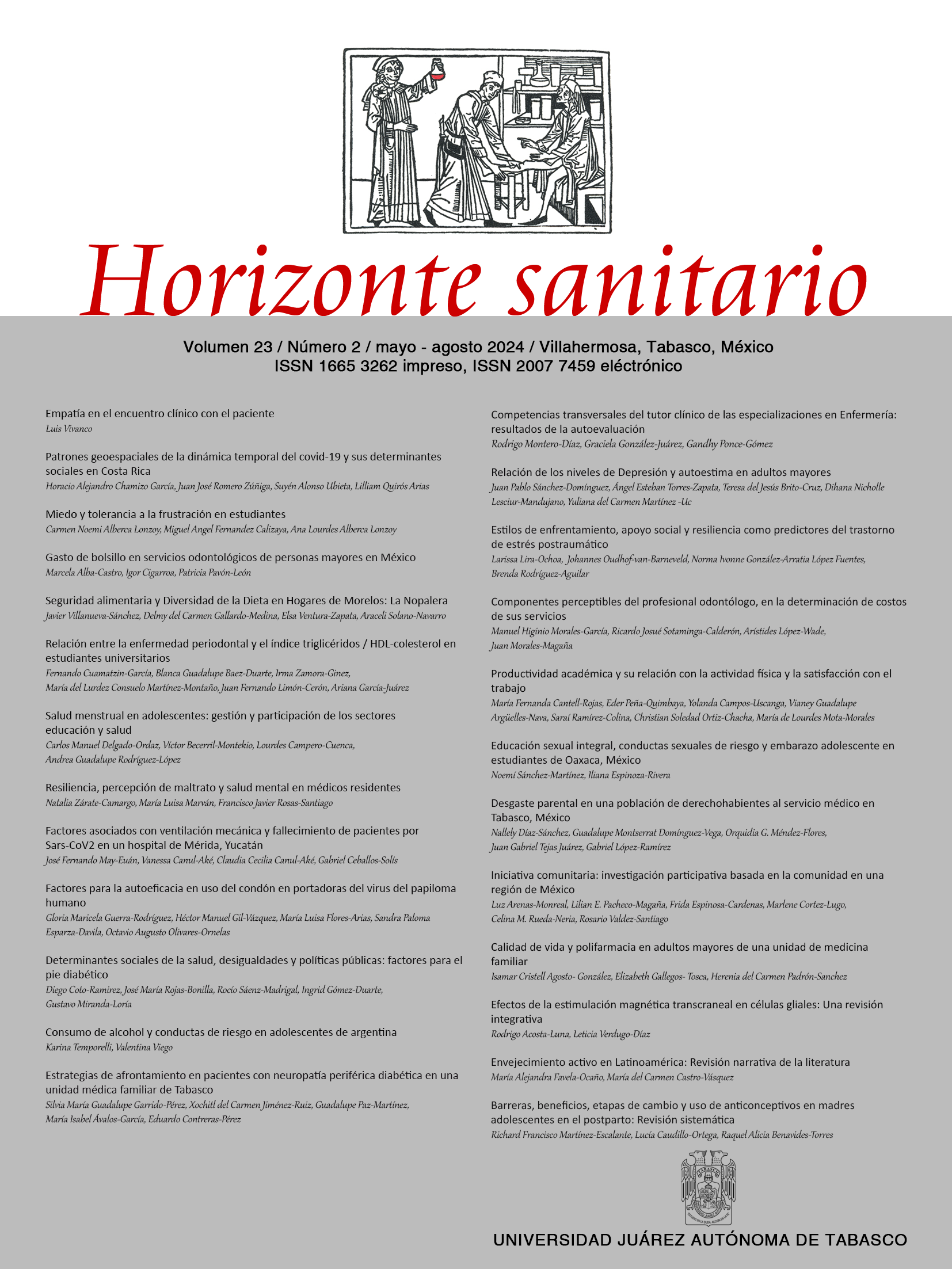Food Security and Diet Diversity in Households from Morelos: La Nopalera
DOI:
https://doi.org/10.19136/hs.a23n2.5801Abstract
Objective: To analyze the prevalence of food insecurity and the diet diversity from households in a highly marginalized locality.
Materials and methods: Analytical observational study carried out in La Nopalera, Yautepec, Morelos. In a sample by-convenience selected households, with a structured survey, information was collected and analyzed to establish the association between the prevalence of food insecurity (FI) with the sociodemographic characteristics of the households and family food consumption at previous week. Parametric and non-parametric statistics at a significance level p<0.05, were used.
Results: Information from 106 households was analyzed, where the general prevalence of FI was 60%. It was more frequent in households headed by women, older people, people with disabilities or low education, and when living with children under 18 y, all with p<0.05. Interestingly, in homes with minors, FI was more frequent and was significantly associated with the low consumption of a variety basic foods (quelites, natural juices, beans, meats) and not recommended (candy, snacks, soft drinks, and artificial juices) all with values p<0.05. A negative trend was observed between dietary diversity and the level of FI (p<0.05).
Conclusions: Six out of ten households in La Nopalera perceive themselves to be food insecure. Food insecurity was found to be associated with sex, age, educational level, and presence of disability in the household head, and when there are minors. When the food insecurity persists, the diet diversity is explicitly compromised.
Keywords: Food Insecurity; Food consumption; Households.
Downloads
Downloads
Published
Issue
Section
License
Copyright (c) 2024 Horizonte Sanitario

This work is licensed under a Creative Commons Attribution-NonCommercial-ShareAlike 4.0 International License.





























